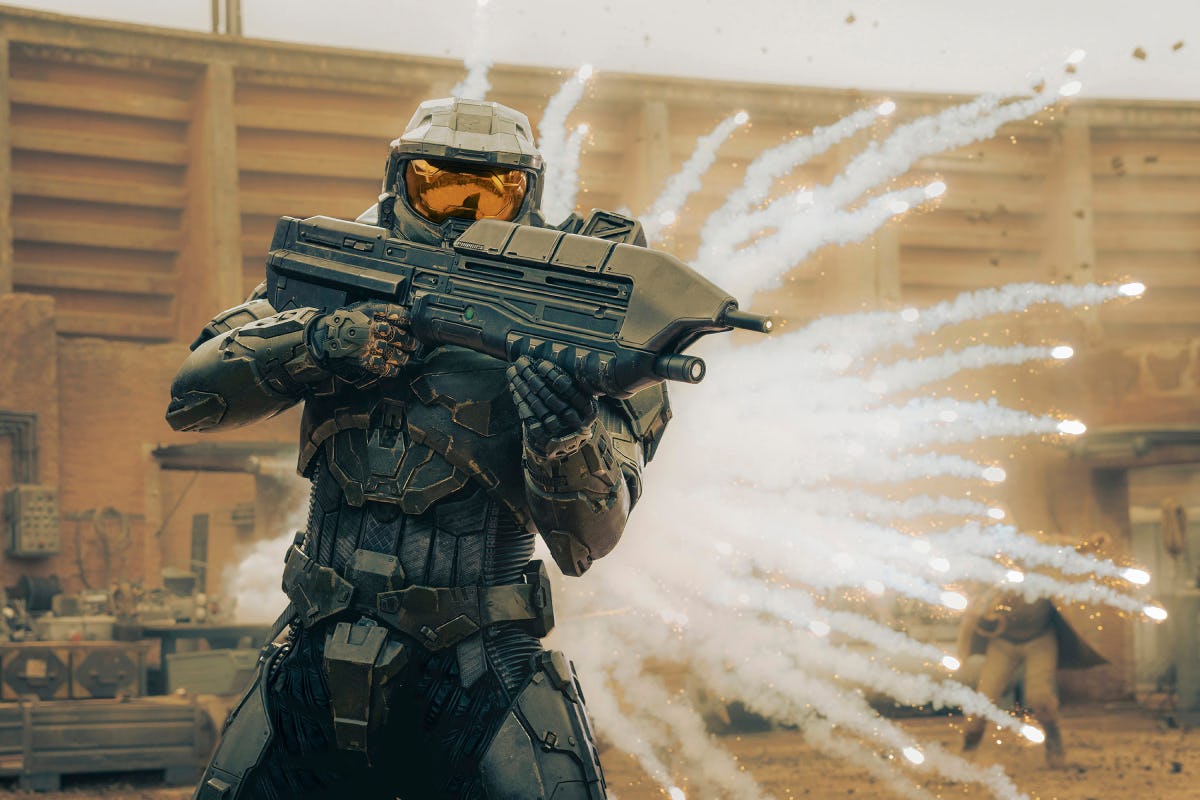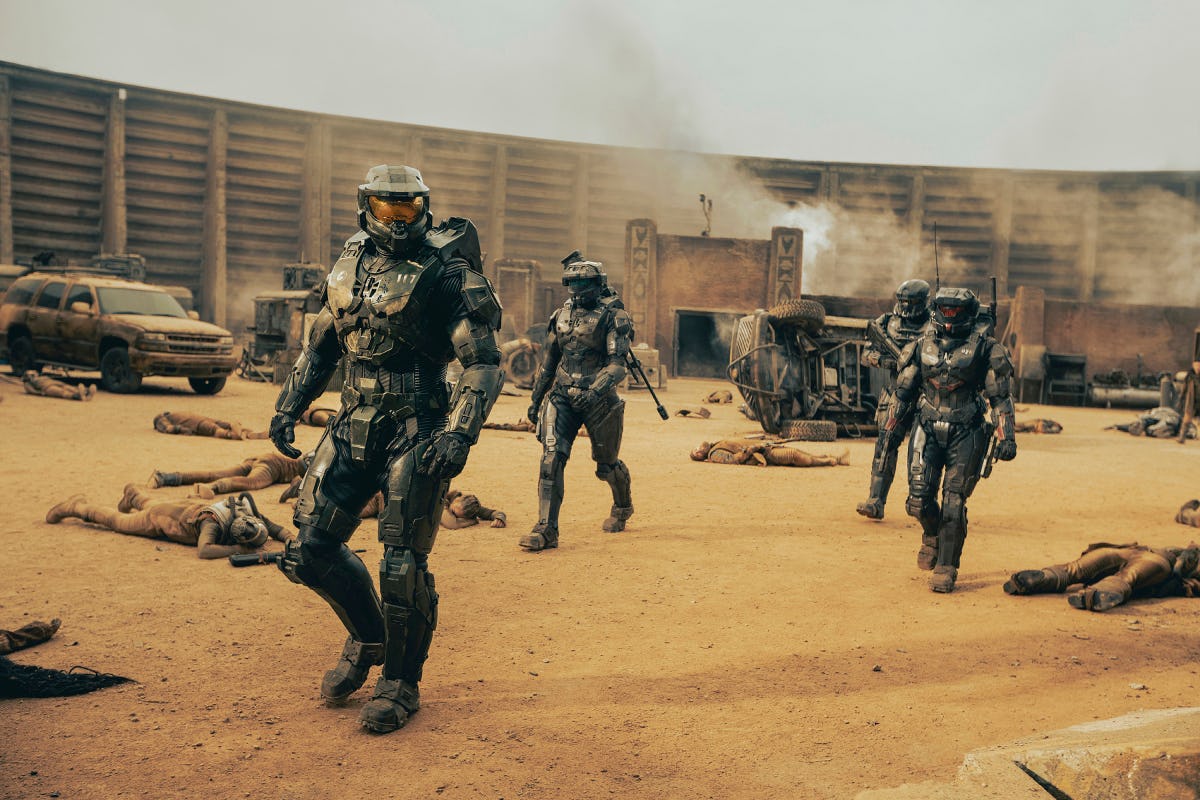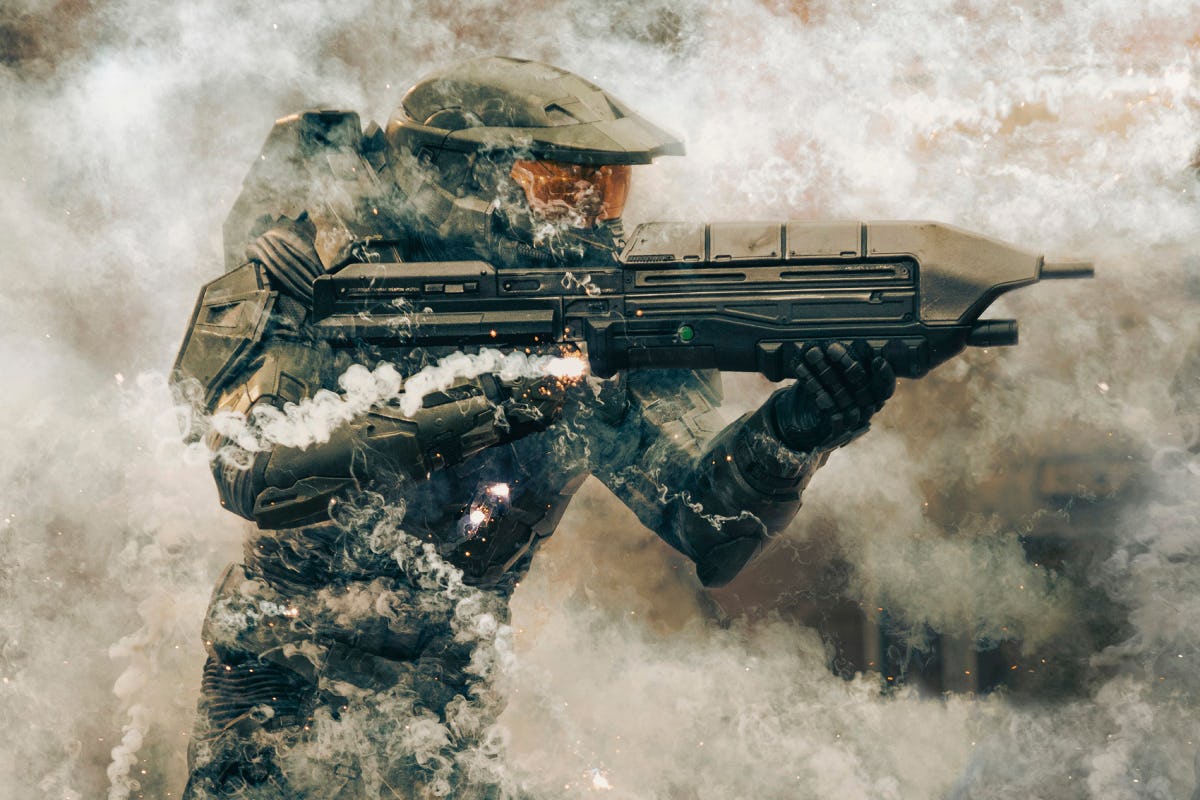
For a generic space soldier, Master Chief is the most interesting of them all.
It’s not just the sleek shape of his bulky armor or the dryness in voice actor Steve Downes’ gruff voice. It’s the blank space that’s allowed gamers of the Halo series to fill in gaps themselves. Before The Mandalorian, Master Chief was the galaxy’s coolest masked badass. For years, players felt invincible as Chief because, in a way, they were him. There was power in anonymity.
Only tangential Halo books and comics revealed a fuller picture of Master Chief beneath his helmet. His story about a stolen childhood — what innocence costs in the face of conflict — could inspire readings that Halo is a stealthy, anti-war epic. (It’s sadly never been that smart, as its existence as a video game necessitates sweet, gun-toting action.)
All of this has added to the allure of who Master Chief was and what he represented. Never mind that, in reality, he was a cut-corner in the game’s production. When Halo was in development by studio Bungie for the original Xbox, the stressed-out programmers prioritized the technical side of things because they were designing for a console no studio knew how to make games for. The integrity of the story took a backseat to function.
Twenty years later, the Halo TV series on Paramount+ is the very definition of a mountain out of a molehill. The show represents a strange compromise of tailoring a story made specifically for a video game to a new medium while ensuring what actually makes it special remains on the surface. I don’t know if Halo will succeed in the end, but I’m liking what I’ve seen so far.
On March 24, Halo will begin streaming on Paramount+. The press were given just two out of 10 total episodes to preview. Because of this, we at Inverse felt it’s a bit unfair to “review” the show based on a small sampling. But like a hands-on game demo, it’s not impossible to muse on the experience. In short, Halo is quite good, though expectations will need to be recalibrated.
Halo is an adaptation of the Xbox games, a series of sci-fi first-person shooters that depict a battle between humanity’s military — the United Nations Space Command (UNSC) — and a race of aliens faithful to a religion centered around ring-shaped planets, called “Halos.”
In stark contrast to the games, the show explores a totally new sequence of events. Those behind it call it the “Silver Timeline” (evocative of the J.J. Abrams-helmed Star Trek movies that adhere to the alternate “Kelvin Timeline”). For Halo purists, this may be disappointing; the show doesn’t open with Master Chief awakening to a firefight, as he did in the original game. Nor does Chief have Cortana, his A.I. companion — at least not right away. The antagonistic aliens, called “The Covenant,” have only just surfaced. It’s not a full-on conflict just yet; it’s an invasion.

What you do get is another entry in the “hardened warrior escorts young companion” narrative. Early in Halo, Master Chief — an elite soldier classified as a “Spartan,” famously equipped with specialized armor — meets a teenage girl, Kwan (Yerin Ha), the daughter of an anti-UNSC rebel, after the Covenant massacres her village. Though she is a political fugitive, Master Chief decides to protect her, taking her on a journey to discover the nature of an ancient relic that can reveal to Master Chief the dark truth of his origins.
It’s The Mandalorian. It’s The Last of Us. It’s Logan and Leon the Professional in space. It’s a story trope that’s trendy in the ether but never wears out as long as the stories are exciting, fresh, and smart.
Halo doesn’t excel at all of those qualities. Nauseating CG aliens dull the show's action; it’s a bad sign when the games’ live-action trailers from over a decade ago feel more visceral than the actual series. None of its ongoing plot threads seem to think beyond the heartstrings. The show’s many mysteries remain locked behind Abrams-esque mystery boxes, which feels like an obligation in the streaming era than a purposeful creative choice.

What does feel like a choice, and the one that will have the most consequence, is the unmasking of Master Chief. Played by Pablo Schreiber (The Wire, American Gods), Master Chief gets to be a real character with a real face. Schreiber is a compelling actor with watery eyes that communicate underlying thoughts and feelings and whose own deep voice adds a new dimension for Chief.
Of course, this will polarize fans. A legitimate argument can be made that Master Chief is interesting because he’s a nobody; we’re meant to see ourselves in his reflective visor. But can that story work for TV? Can that mystique last more than an episode? All I know is that Mandalorian couldn’t resist keeping Din Djarin behind his helmet for long.
Having seen only two episodes, it’s uncertain if the gamble the Halo producers make will pay off. Mandalorian mastered keeping its hero shrouded in mystery, and it probably wasn’t in Halo’s benefit to steal that play. But is Halo still Halo if it reveals Master Chief in full? It all depends on what kind of character Master Chief is actually meant to be.
Halo will begin streaming on March 24 on Paramount+.







